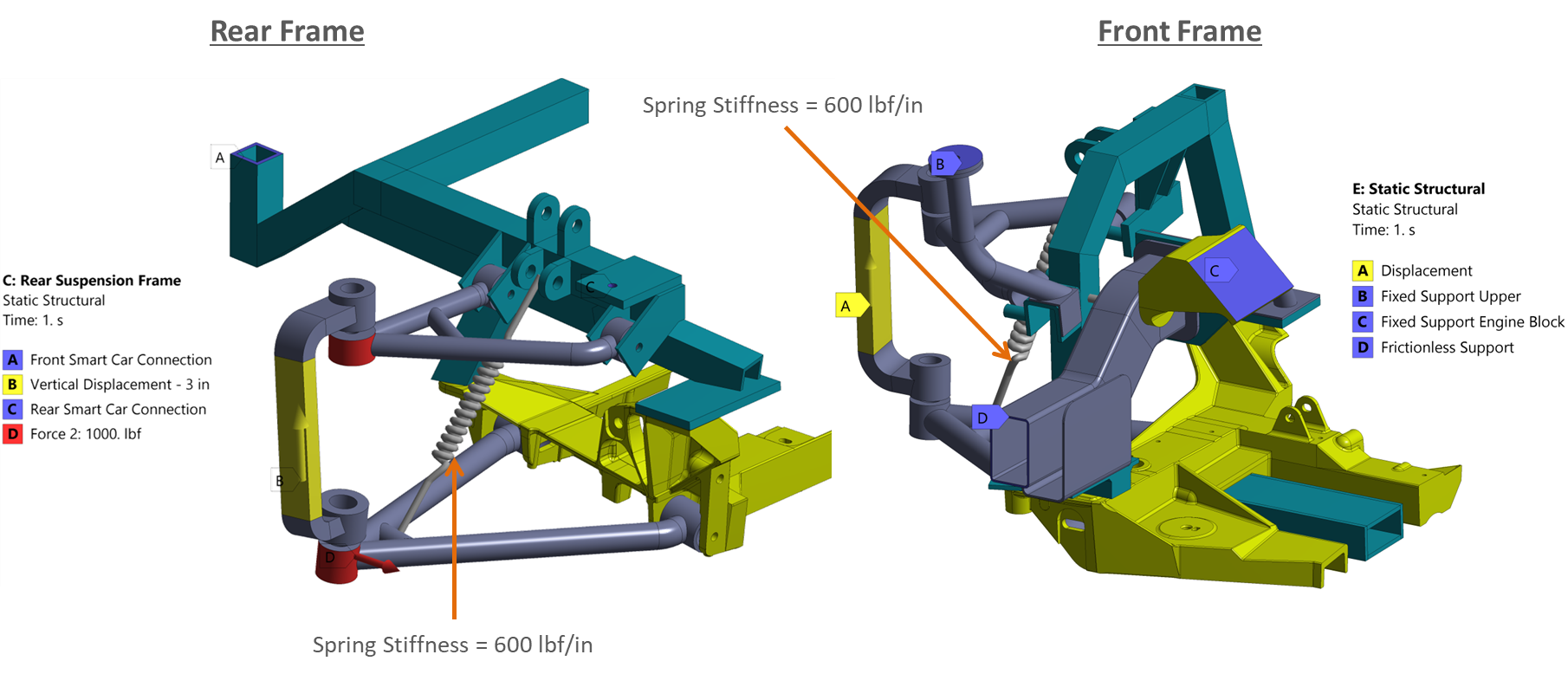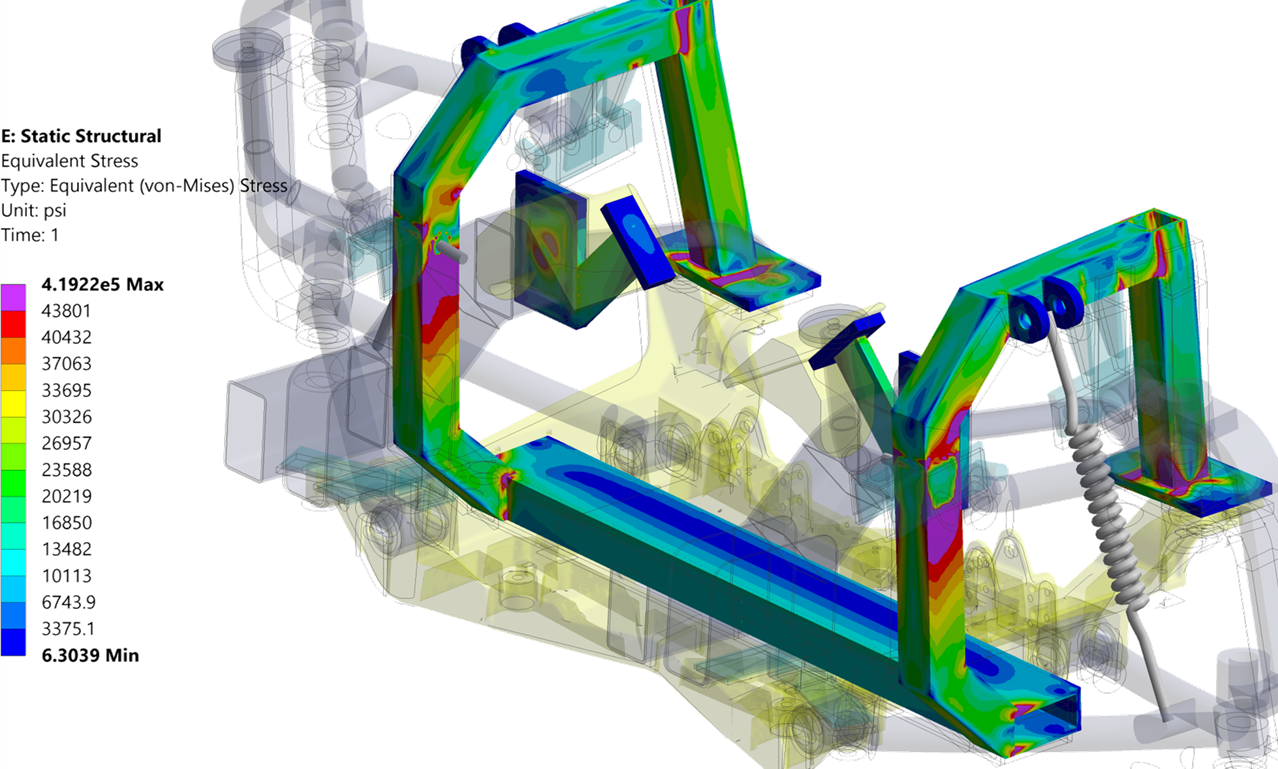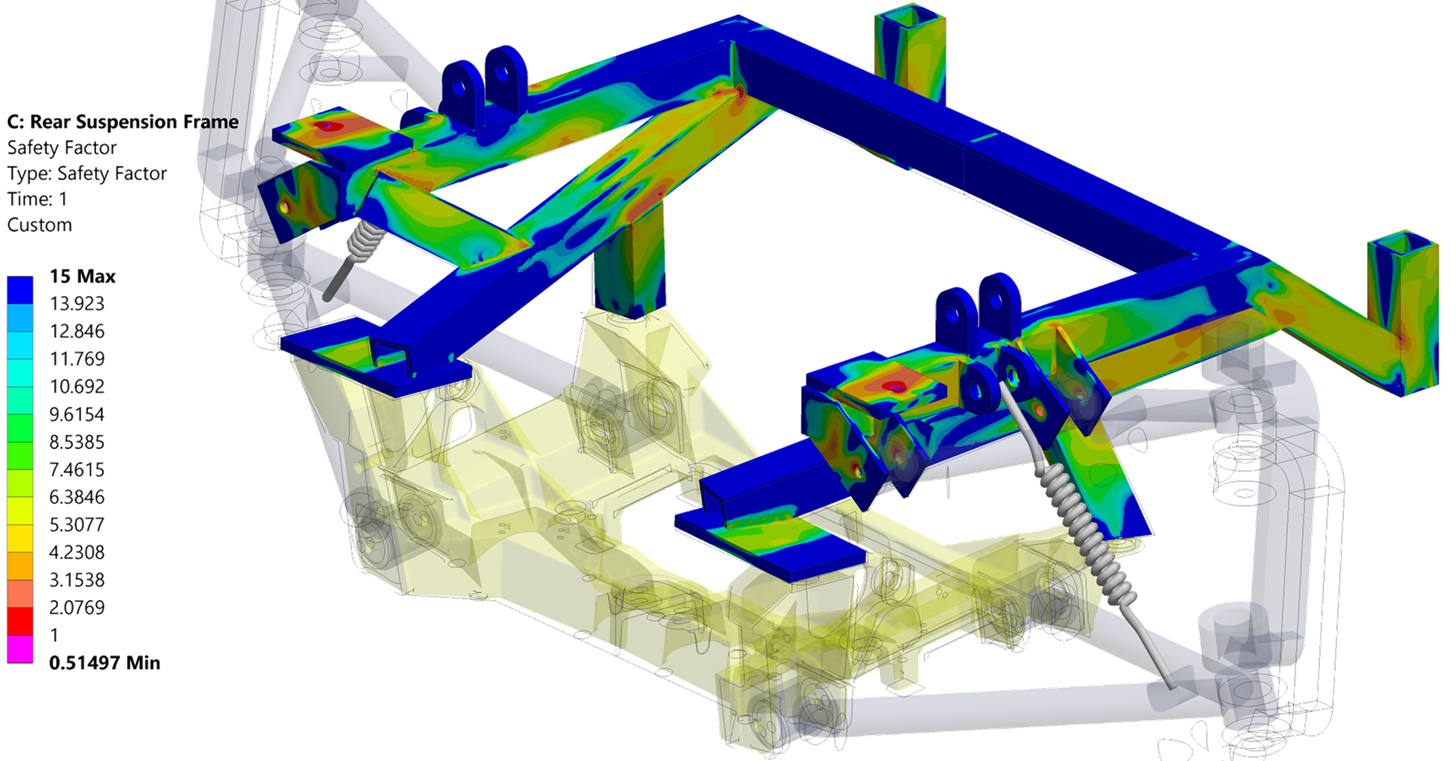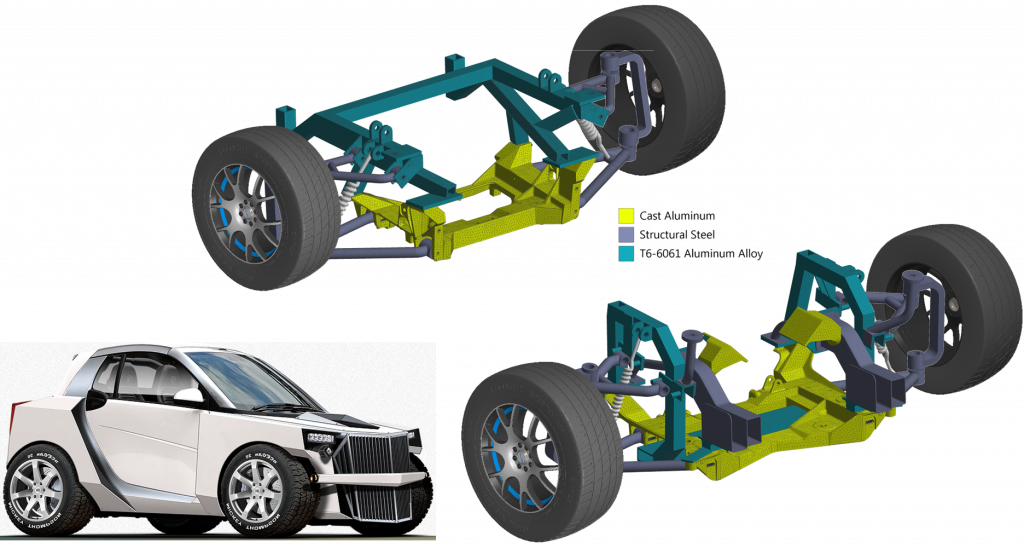Hearn Automotive Redesign based in upstate NY approached Endeavos Innovations Inc. for analysis of a custom-built chassis frame for their prototype sports kit car. The chassis frame was built out of welded Aluminum T6-6061 extrusions bolted with the Corvette C6 front and rear K-frames made out of cast-aluminum. The suspension A-frames used in the chassis are also from Corvette but in the analysis model, simplified embodiments were used having exact geometry and connection measurements to the actual A-frames. The shock absorber is also a simplified “spring with damping” element representation in the ANSYS model.

Details of half symmetric front and rear frame FEA models
In case the reader is wondering what connects the front and rear chassis frames, it is a Smart car body frame. In the initial proof of concept, it was decided to cut down the bulk of chassis fabrication work by using the diminutive Smart car uni-body frame that includes windshield, doors, seats, and all other paraphernalia that would have to be custom designed and fabricated. The front and rear chassis frames are the main load-bearing structures whereas the Smart car frame provides the essential load path and passenger crash safety. This kit car is based on a Corvette LS3 engine and transmission.
The goal of this analysis was the safety of the prototype chassis front and rear frames under extreme loads that include longitudinal (braking & acceleration), Lateral cornering, bending, and torsion. Durability or life analysis was not performed in this initial assessment. The added stiffness provided by the engine and transmission components was also taken into account. In addition to vehicle extreme dynamic loads, engine maximum torque load at full power (450 hp) and first gear RPM was also applied. In a future iteration of this design, the welded aluminum frames will be redesigned and welded joints will be replaced by Lotus Elise style bonded & riveted aluminum frame.

Front Chassis Frame FEA Result: Von Mises Stress Contours
This was essentially an evaluation or analysis project so no major modifications were allowed. The entire analysis including measurements of the actual frame, CAD modeling, and finite element analysis was performed in four weeks.

Rear Chassis Frame FEA Result: Von Mises Stress Contours
The detailed finite element analysis revealed several problems that were modified by geometric modifications including attachment points. The key benefit of finite element analysis (FEA) is that it can predict structural integrity and efficiency without having to resort to multiple physical prototype fabrications, testing, and failures which is a costly, potentially unsafe, and a time-consuming process. At Endeavos Innovations, we have the capability to quickly evaluate a given design or come up with a design from scratch while taking into account performance requirements and shape or styling constraints.


